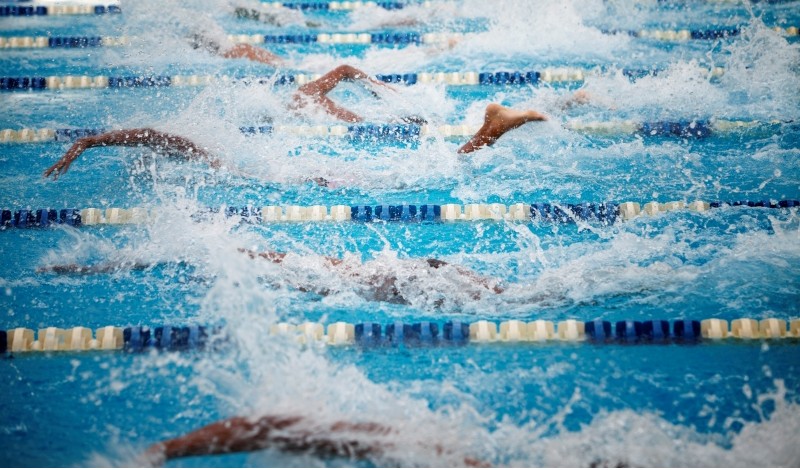
Scholars explore the impact of Title IX and the importance of fairness and inclusion in women’s sports.
Over 50 years have passed since the passage of Title IX, a federal civil rights law administered by the U.S. Department of Education and intended to provide equal access for women in education and athletics in the United States.
Three million additional high school athletic opportunities exist for U.S. women following Title IX’s passage. As access to women’s athletics increased, so did health benefits—including a decreased risk of breast cancer and obesity among teenage girls.
The gender gap in sports, however, still persists, especially for women of color. Only 4 percent of collegiate athletic directors are women who identify as Black, Indigenous, or other people of color (BIPOC), and collectively, U.S. high school boys still receive one million more sport opportunities than U.S. high school girls.
While disparities in women’s access to athletics persist, the conversation surrounding Title IX has also expanded to new topics, including the participation of transgender women and girls in women’s sports.
So far, 25 states have passed legislation banning transgender children and teens from participating on school sports teams that match their gender identity, rather than teams that match their assigned sex at birth.
At the federal level, members of the U.S. Congress have discussed trans women’s inclusion in collegiate sports in several recent hearings. U.S. Senator Dick Durbin (D-Ill.), for example, asked NCAA president Charlie Baker how many athletes participate in the NCAA, and how many transgender athletes Baker is aware of. The answers were 510,000 athletes total, and less than 10 transgender athletes. Baker told Congress that “guidance either on the regulatory side or on the statutory side would be very helpful.”
Despite the low number of trans athletes, the U.S. House of Representatives passed legislation in April 2023 to withhold federal funds from schools that allow transgender women to participate in any activity that is designated for women or girls. Doing so, under the bill, would be a violation of Title IX.
Considerations surrounding the inclusion of trans women athletes extend beyond the playing field. Before Congress, one former NCAA athlete for the University of Pennsylvania argued that women who have experienced sexual trauma are negatively affected by sharing locker rooms with transgender women.
The state of Ohio recently passed legislation to require that—where school-sponsored activities take place—restrooms and locker rooms are designated solely for either cisgender male or cisgender female students.
In a similar move, President Donald J. Trump signed an executive order requiring agencies to ensure that intimate spaces and federally funded programs are designated by sex assigned at birth, rather than gender identity. The order will require agencies to interpret statutes to classify cisgender men and cisgender women as biologically distinct sexes and as the only two recognized sexes in the United States.
The Ohio state legislation and executive order both do not account for intersex students, leaving a lack of clarity for some students.
In response to President Trump’s action, the president and CEO of the National Women’s Law Center, Fatima Goss Graves, asserted that “discrimination based on sex, including discrimination against transgender, nonbinary, and intersex people, remains illegal, and it cannot be legalized through this executive order.”
In this week’s Saturday Seminar, scholars examine the debate over transgender athletes’ participation in women’s sports and Title IX.
- In an article in the William & Mary Journal of Race, Gender, and Social Justice, Deborah L. Brake of the University of Pittsburgh School of Law argues that the exclusion of transgender women from women’s sports under the guise of protecting cisgender women is a baseless appropriation of feminism by reactionary forces. Brake contends that biological essentialism—the argument that women’s sports must be separate from men’s sports because men are biologically superior to women—has no place in Title IX discourse. Instead, Brake argues that the sex distinction in Title IX is based on social categories: It is not meant as a hard and fast biological rule, but rather a pragmatic one to encourage all students’ participation in all events.
- The restrictive nature of athletic governing bodies pushes athletes to raise human rights concerns in inventive ways, Illias Bantekas of Qatar’s Hamad Bin Khalifa University contends in an article in the Wisconsin Journal of Law, Gender & Society. To illustrate, Bantekas describes litigation involving an intersex athlete who was barred from participation in competitions, including the Olympics. Several athletic organizations required the athlete to adhere to institutional rules, including a requirement to undergo hormone treatment. In the lawsuit, the athlete claimed that hormonal therapy was an invasion of the athlete’s private life and involved “unknown potential health hazards.” Bantekas concludes that athletic organizations generally lack expertise in human rights issues, and athletes lack information about their rights until it is too late.
- In a Congressional Research Service report, Jared P. Cole discusses the Education Department’s notice of proposed rulemaking to prohibit categorical bans on trangender students participating in sports consistent with their gender identity. The proposed rule would allow for varying restrictions that are substantially related to educational opportunities at each grade level, however. Cole explains that if Congress endorses this rulemaking, it could allow the rulemaking to proceed, or it could go a step further and enact analogous statutory provisions to protect the proposed rule from legal challenges in federal court. Alternatively, Cole notes, if Congress disagrees with the rulemaking, it could supersede any final rule with a new statute, such as the Protection of Women and Girls in Sports Act.
- In an article in the American Journal of Law and Equality, Kimberly A. Yuracko of Northwestern Pritzker School of Law outlines frameworks that could be used to regulate sex-segregated sports categories. Yuracko explains that sports provide several benefits to participants, including basic benefits––physical health and character building––and special benefits––scholarships, prizes, and awards. Yuracko argues that at recreational and early-childhood levels, sports should be open to all athletes, without regard for ability, to ensure equal access to basic benefits. At higher levels, Yuracko acknowledges that sex-segregated sports categories best advance goals of ensuring women and girls have equal access to special benefits. Including transgender girls in girls’ sports does not hinder these goals outside of extreme cases, Yuracko contends.
- In an article in the NYU Review of Law and Social Change, Shayna Medley of Cardozo School of Law and the Transgender Legal Defense and Education Fund highlights several legal challenges to laws prohibiting the participation of transgender girls in sports and requiring sex testing procedures.. Medley contends that banning transgender girls from sports violates Title IX and the Equal Protection Clause of the U.S. Constitution. Several lower courts previously held that prohibitions on sex discrimination in education extends to anti-transgender discrimination, Medley explains. She argues that these holdings should be applied to anti-transgender sports bans. Alternatively, Medley proposes that––given the anti-Black history of policing sex categories––sex testing requirements constitute race discrimination in violation of Title VI and the Equal Protection Clause.
- A statute requiring school-sponsored sports to be either sex-segregated or coed does not violate Title IX or the Equal Protection Clause, practitioner Chandler Bray argues in a student note in the University of Arkansas at Little Rock Law Review. Sports are unique in that overall differences in abilities among genders are evident, Bray explains. To illustrate how little impact current regulation has on preventing biological advantages in competition, Bray points out that the NCAA does not require a minimum testosterone level in its hormone requirement. As a result, she argues that further regulation is necessary to protect Title IX’s benefits, including women’s athletic scholarships. The unregulated inclusion of transgender women in sports, Bray concludes, will generate an imbalance of fairness for women.



